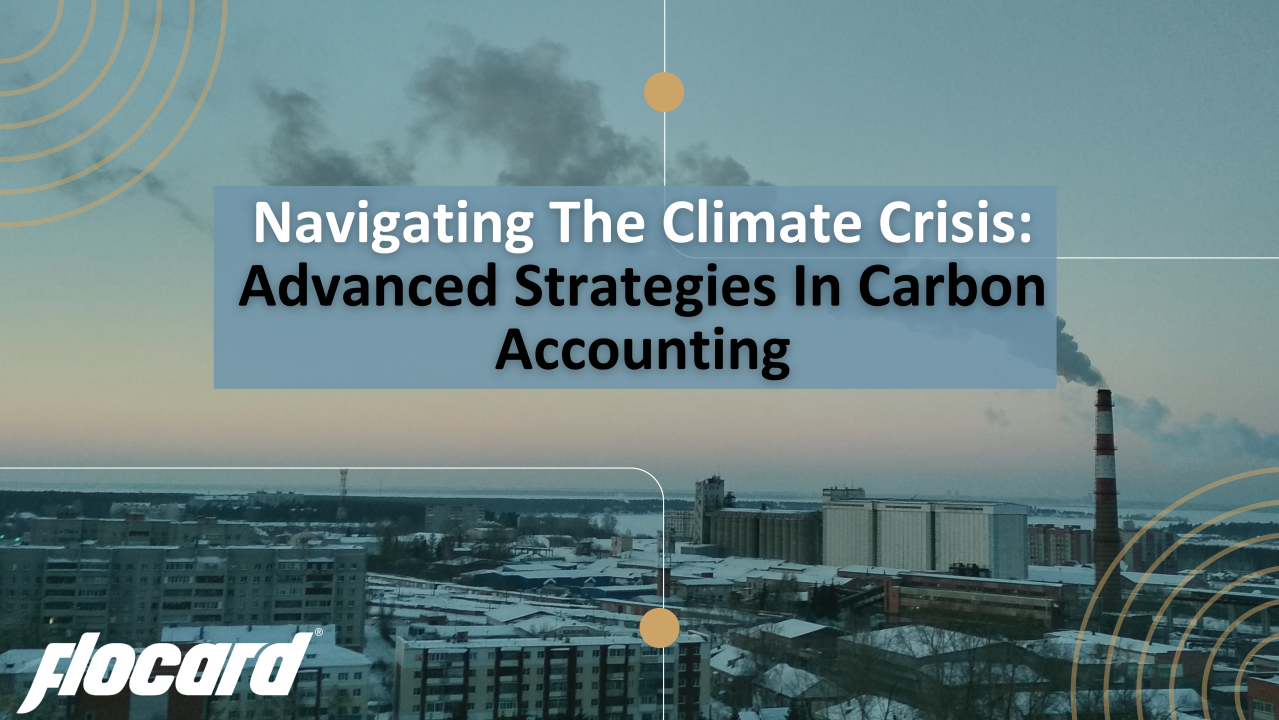Revolutionizing Carbon Management: The Power of New-Age Technologies

Advanced Techniques In Carbon Accounting
In order to achieve environmental sustainability, carbon accounting is essential as it helps to keep monitoring our emissions of carbon dioxide into the atmosphere, which has an impact on environmental degradation. Carbon accounting provides a strategic framework with accurate measurement and management for cutting emissions to decrease the global climate crisis. Advanced techniques in carbon accounting enhance the accuracy, transparency, analytical ability and help to make smart decisions to offset our carbon footprint.
What Is Carbon Accounting?
Carbon accounting is the process of calculating the total amount of GHGs emitted into the environment both directly and indirectly, which contribute to global warming and climate change. Organizations can measure their GHGs emissions ( mostly Carbon dioxide) with the help of carbon accounting, i.e., calculate the emission, set emission reduction targets and evaluate the progress to understand their impact of global climate change. The emissions are classified into three main scopes:
- Scope One Emission: Scope One emissions are known as direct emissions that mainly occur from industrial or our individual activities. The emissions are mainly emitted to the atmosphere through the industrial manufacturing process and the on site fossil fuel combustion from industry.
- Scope Two Emission: Scope two emissions take place at the site where the energy is generated. Even not produced directly on-site, a person or organization although has control over them. The purchase of electricity,heating or cooling service are the sources of scope two emissions. For Industries, this is a common example of Indirect emissions for the energy consumption used in manufacturing processes.
- Scope Three Emission: All the Indirect emissions arise from the activities of an organization known as Scope Three Emissions. Emissions from supply chain activities (manufacturing, transportation and distribution), product consumers and disposal are included in scope three emissions. These are the broadest category of emission which includes indirect emissions that occur in all aspects in the value chain.
Advanced Carbon Accounting Techniques
Various methods are used in advanced carbon accounting techniques for accurately measuring to reduce carbon mission such as LCA helps companies to set an emission reduction plan by assessing a product's environmental effect at each step of its life cycle, CCS are essential for reducing carbon emission as they collect and store industrial pollutants, By selling or purchase carbon credits organizations can offset their carbon emission, Blockchain technologies provides transparency in carbon accounting . AI algorithms also can assess emissions and give mitigation strategies.
Life Cycle Assessment (LCA)
A Systematic method to assess the environmental impacts of a product or service at every stage of its cycle,
from the extraction of raw material to disposal of its end of life. Through evaluating every stage, LCA can
show the product’s manufacturing procedure has a major effect on carbon footprint and gives a holistic view
of the product’s environmental impact on climate change. By pinpointing the region with highest emission,
LCA assists organizations to set target strategies on minimizing their emission. Organizations can enhance
their mode of energy consumption, uses of materials and techniques based on LCA outcomes. Many industries
and organizations have implemented LCA to enhance their sustainability.
Companies like Royal Philips, IKEA,
H&M, Unilever, ZF have taken part in the Alliance of CEO Climate Leaders to address the climate crisis and
achieve net-zero emissions. Adani Creen, Hero Future Energies and Ayana Renewable Power are the Indian green
energy companies that are effectively mediating between government and industry to achieve emission reduction
goals.
Blockchain Technologies And Transparency
Blockchain technologies helps in carbon accounting by giving a transparent and reliable framework for tracking
carbon emissions and offsetting the activities.Blockchain technologies can improve transparency in carbon
offsets programs by providing an accurate record of source, effectiveness and management of each carbon credit.
This distributed planning provides every stakeholder involved in carbon offset schemes access to the same
information, reducing the potential of risk or exploitation. Blockchain may also assist carbon credit tracking
and verification by utilizing smart contracts, which are automatically executing agreements that represent terms
and conditions of each transaction.
Smart contracts increase the consistency and standardization of carbon credit
projects by requiring consistency to identify emission reduction standards. The advantages of blockchain technologies
providing a secure and autonomous carbon offsets marketplace include lower transaction expenses due to reduction of
suppliers, increased accessibility to carbon offset projects for frameworkers and protect transaction security and
integrity through advanced cryptographic techniques.
AI And Data Analytics
AI and Machine Learning algorithms help to enhance the accuracy of carbon accounting through evaluating historical data and recognizing the emission patterns by enabling the development of predictive models that forecast emission projections under different scenarios. For example, AI can optimize vehicle’s emissions by utilizing renewable energy resources and the management of heating and cooling systems. AI also may involved in monitoring deforestation and land use changes by satellite imagery, energy optimizing consumption in smart grids and real time emission monitoring.
Input - Output Analysis
A method that assesses the direct and indirect emissions of the workplace by using economic and environmental data , based on the input and output of products and services it produced. As annbsp;example, when we purchase products from suppliers, additionally we purchase as well the emissions associated with products manufacturing process. Input-Output analysis helps in carbon accounting by tracing the transport of products and the emissions, which enables industries or companies to pinpointing the areas to offset their emissions as well as understanding how their activities impact on carbon emissions. Through analyzing the Input and Outputs of their manufacturing process, organizations can cut their energy consumption and enhance production efficiency.
Environmental Product Declaration (EPD)
An Environmental Product Declaration (EPD) is a report that allows organizations to give clear information about
environmental impacts of their products. EPD is essential for carbon accounting, as It provides a framework for
organizations or industries to assess, report and reduce the carbon footprint of their products throughout their life
cycle. The unbiased, standardized and comparable data offered by EPD due to third party verification.
Environmental
Product Declaration(EPD) are usually valid for five years by strict regulation and standards. ISO14025, an international
standard that defines EPD as a key component, helps to compare, decision making and sharing information. Environmental
Product Declaration (EPD) based on the results from a product’s Life Cycle Assessment (LCA), helps manufacturers to
pinpoint the potential for ecological enhancement and carbon reduction.
Satellite Data and Remote Sensing
Satellite data and remote sensing provides an essential role in carbon accounting by giving real time information on monitoring carbon emissions, estimating carbon stocks and assessing the condition of the blue carbon ecosystem. For example, Satellites can monitor the land use changes and patterns, which affect carbon storage in the environment. It can also detect and analyze forest fires in real time data. By tracking the area, scientists can analyze the carbon emission from burning forests.
Conclusion
Advance carbon accounting techniques are very essential to address climate change and environmental degradation. By implementing LCA, AI driven algorithms, carbon offsetting projects, blockchain technologies organizations can pinpointing measures and set a target to control their emissions for a low carbon future.
Are you struggling with carbon management? FloCard could help.
